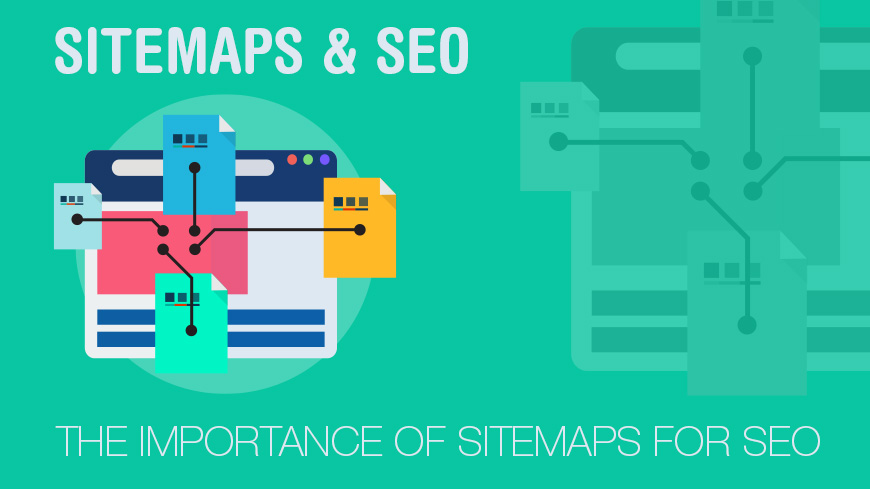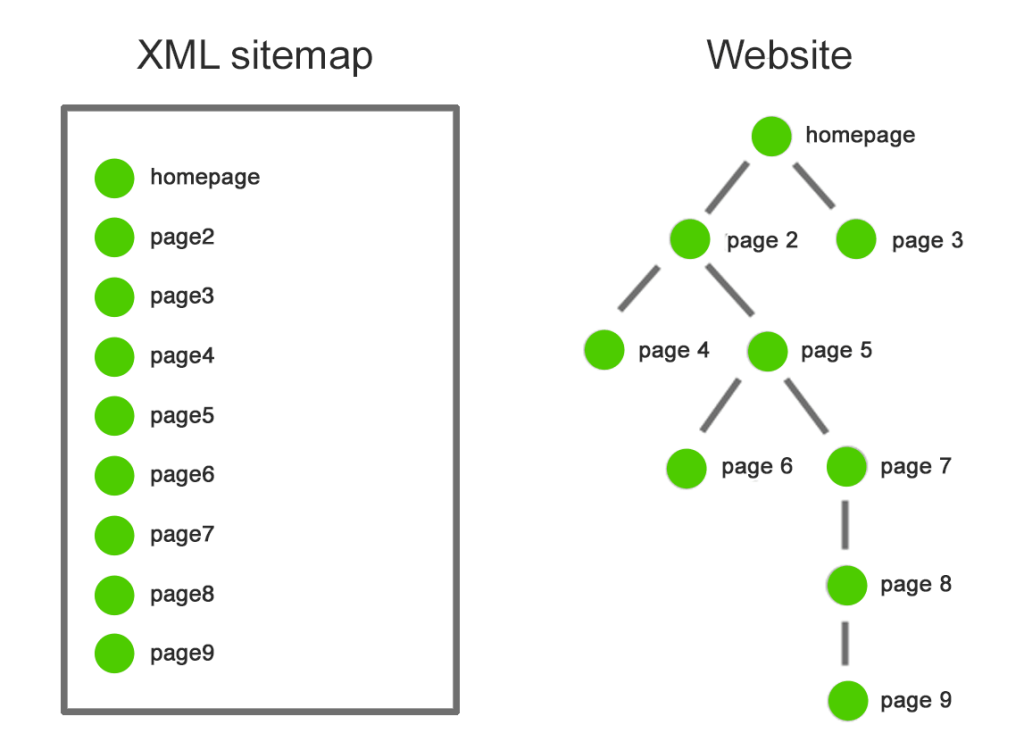A sitemap in SEO is a file where you provide information about the pages, videos, and other files on your site, and the relationships between them. Search engines like Google read this file to more intelligently crawl your site.
A well-structured sitemap can be a pivotal tool in your website’s SEO strategy. It serves as a roadmap for search engines, guiding them through the content you deem most important. This not only helps search engines crawl your site more effectively but also boosts the chances of your content appearing in search results.
By ensuring that all your crucial pages are indexed, a sitemap enhances your website’s visibility and user navigation. Remember, a meticulously crafted sitemap aligns your website’s content with search engine algorithms, fostering better site ranking and improved user experience.

Credit: sitechecker.pro
Introduction To Sitemaps In Seo
Introduction to Sitemaps in SEO starts with understanding its core. A sitemap is a map for websites. It tells search engines about pages on a site. This map is vital for SEO.
The Basics Of Sitemaps
A sitemap is a file where you provide information about the pages, videos, and other files on your site, and the relationships between them. Search engines like Google read this file to more intelligently crawl your site. Here’s what it includes:
- URLs: Links to each page on your site.
- Last updated: When a page was last changed.
- Importance: How important a page is relative to others.
- How often it changes: How often a page is likely to change.
Why Sitemaps Matter For Seo
Sitemaps are essential for SEO for several reasons:
- They help search engines find and index all pages on your site.
- They highlight the site’s important pages.
- They support faster discovery of new or updated pages.
This ensures your site’s content is visible and ranks well in search engines. A well-structured sitemap can boost your SEO efforts significantly.

Credit: dynomapper.com
Types Of Sitemaps
Sitemaps are roadmaps for search engines. They guide crawlers to the most important pages on a website. Understanding the types of sitemaps is crucial for effective SEO.
Xml Vs. Html Sitemaps
XML sitemaps are designed for search engines. They list URLs, providing data on updates and page priority. HTML sitemaps serve users, offering an overview of the site’s content.
| XML Sitemap | HTML Sitemap |
|---|---|
| For search engines | For users |
| Lists URLs | Shows content structure |
| Includes metadata | Improves navigation |
Specialized Sitemaps For Media
Specialized sitemaps target specific content types like video, images, and news. They help search engines find and index these media files quickly.
- Video Sitemaps: Detail video content on a site.
- Image Sitemaps: List images for better visibility.
- News Sitemaps: Focus on recent, newsworthy articles.
Creating A Sitemap
A sitemap guides search engines through your website. It lists URLs with essential metadata. Creating a sitemap boosts SEO by ensuring all pages get crawled.
Essential Elements Of A Sitemap
Sitemaps require specific elements to function well.
- URL: Each webpage’s direct link.
- Last Modified: The last update date.
- Change Frequency: How often page content updates.
- Priority: Importance of pages relative to each other.
Tools For Sitemap Generation
Various tools can automate sitemap creation. These are user-friendly and efficient.
| Tool Name | Features | Output Format |
|---|---|---|
| XML Sitemaps Generator | Quick setup, handles large websites | XML, HTML |
| Screaming Frog | SEO crawling, integrates with Google Analytics | XML |
| Yoast SEO | Designed for WordPress, updates with content | XML |

Credit: cindtoro.com
Submitting Your Sitemap To Search Engines
Submitting Your Sitemap to Search Engines is a crucial step in SEO. A sitemap guides search engines through your website, showing all your pages. It helps search engines index your site effectively. Submitting your sitemap can boost your SEO efforts. Let’s learn how to submit your sitemap to Google and Bing.
Google Search Console Submission
Google Search Console (GSC) helps you manage your site’s presence in Google searches. To submit your sitemap:
- Sign in to GSC.
- Select your website.
- Click on ‘Sitemaps’ under ‘Index’.
- Enter your sitemap URL.
- Click ‘Submit’.
After submission, GSC will confirm receipt. It will also report any issues found.
Bing Webmaster Tools Submission
Bing Webmaster Tools (BWT) is similar to GSC. It helps your site appear in Bing searches. To submit your sitemap to BWT:
- Log into BWT.
- Add your site.
- Go to ‘Configure My Site’.
- Select ‘Sitemaps’.
- Enter your sitemap URL.
- Press ‘Submit’.
Bing will check your sitemap and use it to improve your site’s visibility.
Sitemap Best Practices
Sitemap Best Practices are key for SEO success. A sitemap guides search engines through your website. Think of it as a map for Google bots. It lists URLs from your site. This helps search engines crawl your site better. Let’s dive into the practices that make a sitemap work best.
Maintaining An Updated Sitemap
A current sitemap is crucial. It should reflect new content. Remove old or irrelevant pages. This keeps search engines informed. Use automation tools for regular updates. This maintains your sitemap without manual effort.
Managing Sitemap Size And Complexity
Sitemaps should not be too big. Break them into smaller sitemaps if needed. Large sitemaps can be split by content type or section. This makes crawling easier for search engines. Ensure each sitemap is under the 50MB limit. The URL count per sitemap should stay below 50,000.
Follow these practices for a sitemap that works. An updated, well-organized sitemap boosts your SEO. It helps search engines understand your site. This can lead to better rankings and more traffic.
Sitemaps And Site Architecture
Understanding Sitemaps and Site Architecture is key for website success. Sitemaps guide search engines and users through a website’s content. A well-structured site architecture makes finding information easy. Let’s dive into how sitemaps reflect site hierarchy and improve navigation.
Reflecting Site Hierarchy In Sitemaps
A sitemap is like a map for your website. It shows the structure of your site. A good sitemap matches your site’s hierarchy. This means it shows main pages and subpages in order. This helps search engines understand your website better. It also helps them see how pages connect to each other.
- Main pages are like the big chapters in a book.
- Subpages are like sections within those chapters.
Putting your pages in a clear order makes your site user-friendly. It also boosts your SEO.
Improving User Navigation
Good sitemaps make websites easy to use. Users can find what they need quickly. This is important for keeping visitors happy. Happy visitors stay on your site longer. They also come back more often. Both are great for SEO.
- Show a clear path from the homepage to all pages.
- Use simple, understandable titles for your pages.
- Group similar content together to help users find related topics.
By making your site easy to navigate, you help users and search engines. This leads to better rankings and a happier audience.
Analyzing Sitemap Impact On Seo
A sitemap is a roadmap of a website that guides search engines through the content. It lists out URLs that a site wants indexed. Understanding how sitemaps affect SEO is crucial for website owners.
Tracking Indexation Rates
Indexation rates reveal how many pages search engines have added to their databases. A sitemap makes this process smoother.
Here’s how to track indexation:
- Submit your sitemap to search engine tools.
- Compare the submitted URLs against indexed ones.
- Identify gaps and troubleshoot issues.
Regular checks ensure that a site’s content remains visible to users.
Evaluating Sitemap Contributions To Rankings
A sitemap alone doesn’t boost rankings. It must work with quality content and solid SEO practices.
To evaluate a sitemap’s effect:
- Monitor rankings over time.
- Look for trends after sitemap updates.
Improvements may indicate sitemap effectiveness.
Advanced Sitemap Strategies
Let’s dive deep into Advanced Sitemap Strategies. A sitemap guides search engines through your website. It lists URLs and helps with site navigation. For large websites or those targeting multiple regions, advanced strategies are key. They ensure all pages get indexed correctly. This can boost SEO performance significantly.
Dynamic Sitemaps For Large Websites
Dynamic sitemaps are crucial for big sites. They automatically update when new pages are added. This keeps the sitemap current without manual changes. Use a script or a CMS plugin to generate a dynamic sitemap. This ensures search engines always have the latest page info. It’s effective for sites with frequent updates or a large number of pages.
Leveraging Sitemaps For International Seo
For sites targeting different countries, international SEO is vital. Use sitemaps to tell search engines about various language or regional versions. Include
Common Sitemap Mistakes To Avoid
Let’s discuss common sitemap mistakes and how to avoid them. A well-crafted sitemap boosts SEO by guiding search engines through your site. Avoiding these errors is crucial for website health and search performance.
Overlooking Broken Links
Broken links damage user experience and SEO rankings. They lead to nowhere, frustrating visitors and search engines. Routinely check your sitemap for broken links. Tools like Screaming Frog or Google Search Console help find and fix them.
Ignoring Sitemap Updates
A sitemap must reflect your current site structure. Regular updates ensure new pages are indexed. Neglecting updates can lead to outdated sitemaps. This oversight makes it hard for search engines to discover new content. Schedule regular sitemap reviews to maintain accuracy.
Frequently Asked Questions
What Is Sitemap And Types?
A sitemap is a file that lists a website’s important pages, ensuring search engines can find and crawl them. There are mainly two types: XML for search engines and HTML for users.
Which Sitemap Is Best For Seo?
An XML sitemap is best for SEO. It efficiently guides search engines through your site’s structure, enhancing indexing. Ensure it’s updated regularly for optimal results.
What Is The Difference Between A Website And A Sitemap?
A website is a collection of web pages accessible online. A sitemap, on the other hand, is a structured list outlining all pages and content of a website, aiding both users and search engines in navigation.
How To Create A Sitemap?
To create a sitemap, choose a format (XML, HTML, or text) and list all website URLs. Use sitemap generator tools or plugins for ease. Upload the sitemap to your website’s root directory and submit it to search engines via their webmaster tools.
Conclusion
Understanding sitemaps is crucial for SEO success. They guide search engines through your content, ensuring nothing gets overlooked. By implementing a well-structured sitemap, your site stands a better chance at improving its visibility and ranking. Embrace this tool to help search engines help you.


